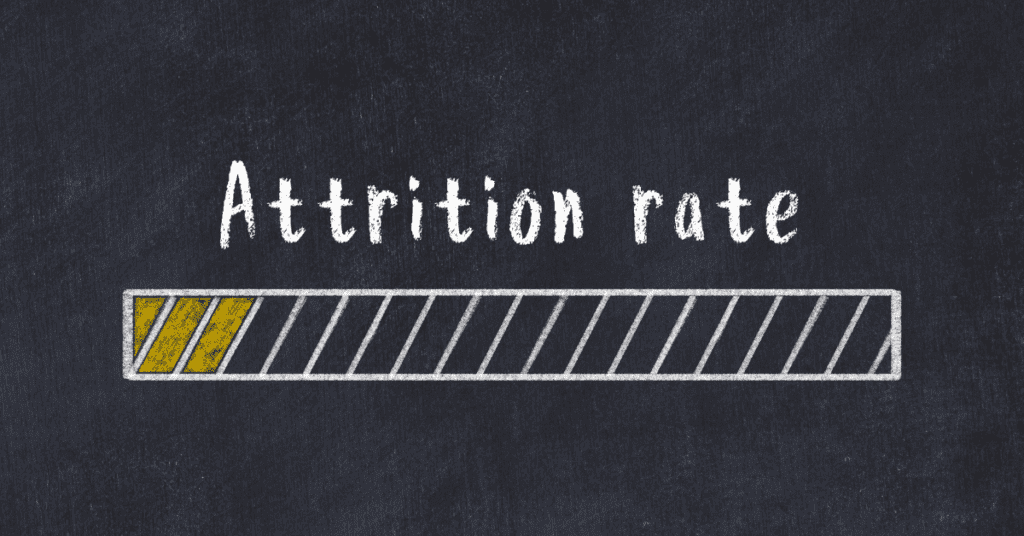As a certified public accountant (CPA), you understand the importance of staying ahead of the game. The accounting industry is constantly evolving, and it’s critical to stay on top of the latest trends and accounting technologies to keep your CPA firm running smoothly.
The 2022 AICPA PCPS (Private Companies Practice Section) Survey shed light on the ever-growing challenge of keeping up with changes in technology and managing the associated costs in the accounting industry. With the rapid pace of technological advancements, it is becoming increasingly difficult for firms to stay current and maintain a competitive edge in the market. The survey results revealed that firms are struggling to stay up-to-date with the latest accounting technologies, with many reporting that they are facing significant costs and operational challenges in doing so.
Digital transformation provides a solution to these challenges, enabling firms to streamline their operations, improve their services, and enhance their competitiveness in the market.
CPAs can stay ahead of the curve, by embracing digital transformation in a rapidly changing accounting industry and remain competitive in a crowded marketplace through modern technologies. In this blog, Finsmart Accounting – trusted for accounting outsourcing in India – will talk about modern accounting technologies and how CPA firms can adapt to the changing tech-driven landscape. Read on!
Adapting to new technologies as a CPA firm
By following the steps outlined in this article, firms can successfully implement digital transformation and stay ahead of the curve in the rapidly changing accounting industry.
Let me provide a comprehensive overview of the emerging technologies that are shaping the future of the accounting industry.
However, if you want to move straight to understanding the steps of implementing them you can click here.
Most of them will fall under below 3 key solutions:
- Cloud Computing
- Artificial intelligence
- Data Analytics
Accounting Seat from Finsmart has done wonders for hundreds of accounting firms in the USA. Check out what this accounting firm has to say about us:
Cloud Computing in Accounting
Cloud computing has become increasingly popular in recent years and is being adopted as a technology upgrade by accounting firms for good reason. By moving your accounting processes to the cloud, you can enjoy numerous benefits, including:
- Increased Flexibility: With cloud computing, you can access your data and software from anywhere, at any time, on any device. This makes it easier to work remotely and collaborate with team members.
- Improved Security: Cloud service providers invest heavily in security measures, making it safer to store your data in the cloud than on a local server.
- Reduced Costs: By eliminating the need for on-premise hardware and software, you can reduce costs and improve your bottom line.
Artificial Intelligence in Accounting
Artificial intelligence (AI) is transforming the way businesses operate, including the accounting industry. From automating repetitive tasks to providing advanced insights and analysis, AI is proving to be a valuable tool for CPAs. Here are a few reasons why you should consider embracing AI at your accounting firm like thousands of others are:
- Streamlining Processes: AI-powered solutions can automate manual tasks such as data entry and invoice processing, freeing up time for CPAs to focus on more complex tasks.
- Improving Accuracy: By using machine learning algorithms, AI systems can reduce the risk of errors and provide more accurate data analysis.
- Enhancing Customer Service: AI-powered chatbots can provide 24/7 support to clients, improving the overall customer experience.
Data Analytics in Accounting
In the modern world, data has become an integral part of the accounting industry. With the advent of advanced technologies and digitalization, the collection and analysis of data have become a crucial aspect of accounting practices in the USA. The integration of data analytics in accounting has not only streamlined processes but also provided businesses with valuable insights that can help drive better decision-making.
Data Analytics will remain the heart of the strategy for CPAs to move up the value chain i.e offering CAS (Client accounting services) or CAAS (client accounting advisory services).
Here are a few applications of Data Analytics in accounting that have convinced thousands of CPA firms about adapting new technologies:
- Financial Statement Analysis: Data analytics can be used to analyze a company’s financial statements and identify trends, such as changes in revenue, expenses, and profit margins. This information can inform decision-making and help companies understand their financial performance.
- Budgeting and Forecasting: Data analytics can be used to create accurate budgets and forecasts based on past financial information and trends. This can help companies plan for future growth and make informed decisions.
- Audit and Compliance: Data analytics can be used to support the audit process and ensure compliance with regulations and standards. By automating the process of data collection and analysis, data analytics can reduce the risk of human error and provide accurate information for auditors.
- Cost Management: Data analytics can be used to analyze cost information and identify areas where cost reductions can be made. This can help companies reduce expenses and improve profitability.
Some examples of tools that incorporate all the above 3 technologies and how CPAs and accounting firms can utilize cutting-edge digital transformation solutions in specific areas are:
Accounting Firm Collaboration: Tools such as Slack, Asana, and Trello can help small accounting firms improve collaboration between team members. These platforms allow teams to share information, communicate in real time, and track project progress, improving productivity and reducing the risk of errors.
Receipt Management: Solutions such as Dext, Shoeboxed, and Expensify can help small accounting firms automate the process of managing receipts. These tools use AI algorithms to extract key information from receipts, such as the date, vendor, and amount, reducing the time and effort required for manual data entry.
Invoicing: Platforms such as Zoho Invoice, FreshBooks, and QuickBooks allow small accounting firms to create and send invoices, track payments, and manage client communications in a streamlined and efficient manner. These cloud-based solutions can also be integrated with other tools, such as payment processing and receipt management solutions, to provide a comprehensive solution for invoicing.
Implementing Emerging Technologies in Your CPA Firm
Now that we have understood the modern accounting technologies available at our disposal, let’s understand the steps that can help CPAs and accounting firms to implement and embrace them:
Step 1: Embrace technology – Since you have reached this, you have already completed this step by understanding the benefits of these technologies.
Step 2: Conduct a needs assessment – This involves identifying the current pain points, challenges, and opportunities in the accounting and finance processes, and assessing the impact of technology in their firm.
Step 3: Define the goals – Based on the needs assessment, CPAs and accounting professionals should define the goals of digital transformation. These goals should be specific, measurable, achievable, relevant, and time-bound (SMART). Create goals based on opportunities & threats of your firms.
Step 4: Identify the technology and tools – Once the goals have been defined, CPAs and accounting professionals should identify the accounting technologies and bookkeeping tools that can help to achieve these goals. This may include cloud-based accounting software, data visualisation tools, data analysis tools, and automation tools. Understand the integration of multiple technology solutions into your existing process and tools.
Step 5: Create a roadmap – Based on the accounting technology and tools identified, CPAs and accounting professionals should create a roadmap for the implementation of digital transformation. This roadmap should include a timeline, budget, and responsibilities for each step of the process. Create a roadmap that is built on your strengths and weaknesses and ensure to incorporate the learning curves for your firm.
Step 6: In-house or outsource – Once you have created the roadmap, key decisions now will be implementing the roadmap on your own or using your in-house team, or partnering with accounting technology vendors to implement them. In the case of technical vendors, you also have to decide if they can be outsourced. To choose the right vendor, do the cost-benefit analysis, their expertise, and experience, security, domain expertise in finance accounting, and custom development for your requirements. This is how the best in the accounting business has adapted to accounting technologies and thrived.
Step 7: Engage stakeholders – Digital transformation often involves collaboration between different departments and stakeholders, including employees, clients, and vendors. CPAs and accounting professionals should engage all stakeholders in the process, and communicate the goals, benefits, and expectations of digital transformation to all parties. Communication will play a key role in order to effectively implementing your digital transformation.
Step 7: Monitor and measure progress – Once the digital transformation roadmap has been implemented, CPAs and accounting professionals should monitor and measure progress to ensure that they are meeting their goals. This may involve tracking key performance indicators (KPIs), conducting regular performance reviews, and making adjustments as needed to ensure that the implementation remains relevant and effective.
Step 8: Invest in training -Digital transformation can be a significant change for employees, and it’s important to ensure that they are adequately trained in the use of new tools and technologies. This may include in-person training, online courses, or certification programs. This is crucial because if team members don’t adapt to new accounting technologies, execution will move forward slowly.
Step 9: Continuously improve – Digital transformation is an ongoing process, and it’s important to continuously evaluate and improve upon the tools and technologies being used. CPAs and accounting professionals should regularly assess their processes and procedures, identify areas for improvement, and make changes as needed to ensure that they are keeping pace with the latest developments in the field.
Connect for Accounting Offshoring Support
By partnering with an experienced offshore accounting services provider, a firm like AccountingSeat by Finsmart Accounting, CPA firms can access a team of professionals who are knowledgeable about the latest technology and domain experts in US accounting.
In addition, offshoring can also help to streamline operations, reduce costs, and improve the overall quality of services provided to clients. Whether it’s digital transformation, financial reporting, or any other aspect of accounting, offshoring is a valuable tool for CPA firms looking to stay ahead of the game in an ever-changing technology landscape
Share your thoughts
Would you like to know more about utilizing technology for your accounting business or have you or your company worked with offshore accountants? What was the experience like? Join the conversation below or check out our recent blogs on offshore accounting:
Ensuring data confidentiality & security
Tips to engage the best bookkeeping outsourcing company in India
2023 strategies to expand accounting business
India entry services to expand and scale in India

Maanoj is Co-founder & Director of Growth Strategy & Alliance at Finsmart Accounting. He is an Outsourcing Expert, a People Champion, and a Dynamic Leader with strong Business Strategy and Scaling-up experience. He has incubated businesses, sold & exited ventures; helped build strong enterprises in very diversified verticals like Fintech, HR & Consulting spaces in various CXO capacities over the last 20 years.









